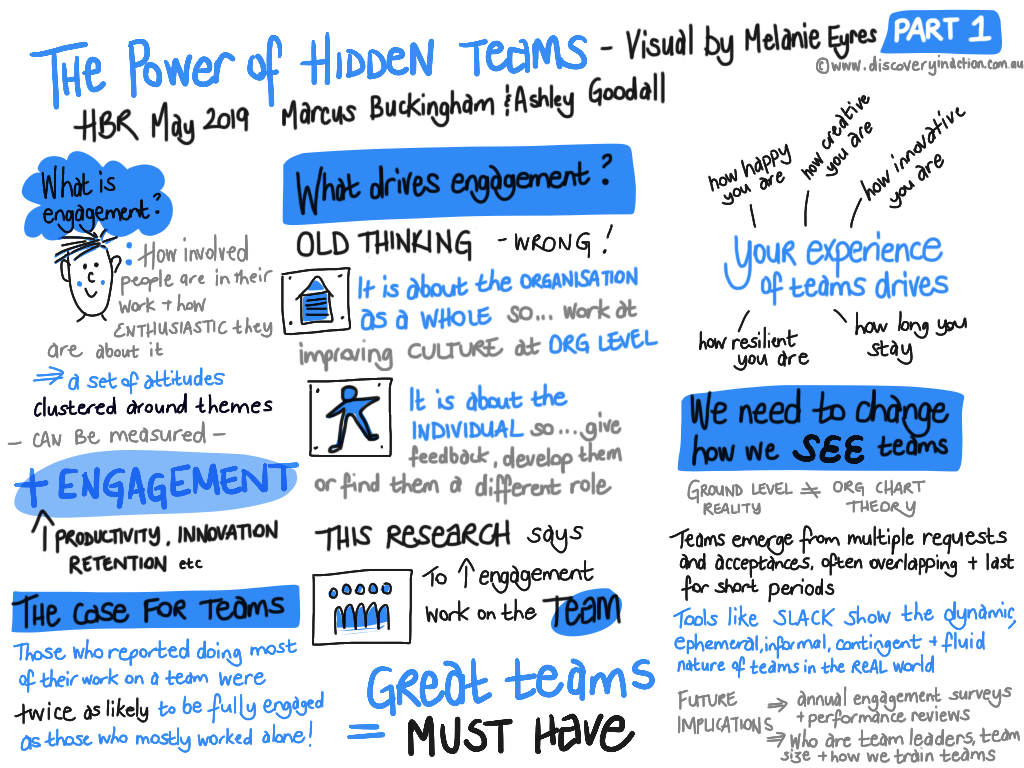The Power of Hidden Teams
One of our recent favourite pieces has been the May 2019 HBR article by Marcus Buckingham and Ashley Goodall called ‘The Power of Hidden Teams’. We are fans of these researchers, having shared some of their work before (The Feedback Fallacy and Using your One-on-one to fuel performance). This new piece of research has particularly caught our interest for a number of reasons; it
- explores factors that influence people’s engagement levels at work
- highlights the amazing influence that ‘hidden teams’ have on these engagement levels
- highlights the importance of the team leader role and the crucial need for team members to deeply trust their leader, and
- challenges your thinking about
- the priority we place on selecting, training, rewarding and promoting team leaders
- the ideal size of teams and the dynamic nature of teams in the real world (not the organisation chart),
- some of the practices of the ‘best teams‘,
- and the value of modern day interventions such as annual engagement surveys and annual performance reviews
There is so much in this article, that we have had to create TWO visuals!

The first part of the article explores emerging thinking about what drives engagement, the emerging case for teams, and the challenge of really ‘seeing’ teams in the real world.
The second visual shares some of the practices of the ‘best teams’, crystalises the JOB of the team leader, and shares the 8 ingredients of engagement, that can be measured. It also makes some suggestions about themes to consider in the future.

Major messages
The Job of the Team Leader
The job of the team leader is ‘to create, day in and day out, an experience on the team that allows each person to offer their unique best, and then to meld those contributions into something no individual could do alone.’
Team leaders need to engage in frequent (possibly weekly) one to one discussions, as well as team discussions that focus on the priorities that are ahead, how the member and the team can use their strengths in helping to realise those priorities, and how the team leader can support this progress.
8 Ingredients of Engagement
These 8 ingredients should be explored regularly, “to help gauge progress, not for the purpose of accountability, but rather for illumination and course correction.”
These 8 statements, measured on a 5 point scale of strongly disagree to strongly agree have been shown by this study to be the most reliable and powerful way to explain the difference between the “best work experiences and the rest”. What is important about these statements is that they are not ratings of managers or of companies – rather they are of people rating their own feelings and experiences.
Importantly for us, there are strong similarities between these 8 themes and those we have found to be the core conditions of an environment that leaders need to help create for people to be their best! And they support the question we often ask our DiA participants – Are your team members using their strengths every day?
See our DiA People Leadership Strategies model and How did you make your staff feel today?

